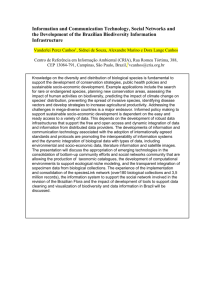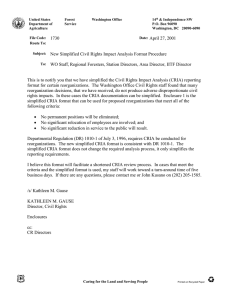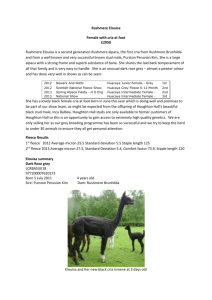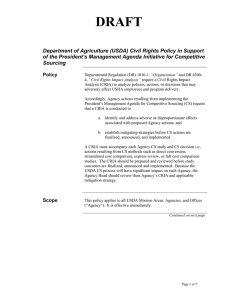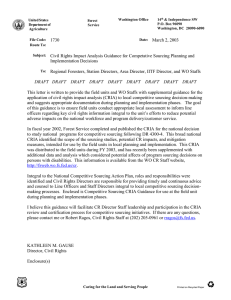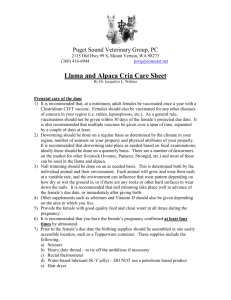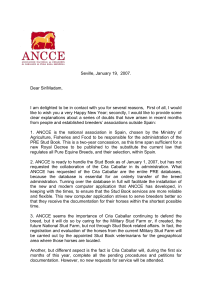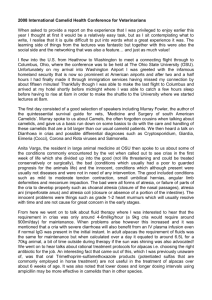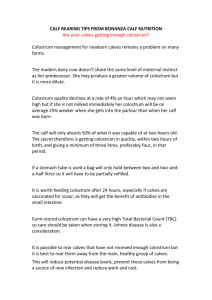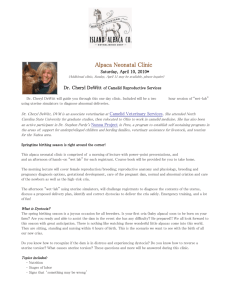Colostrum and Plasma - British Camelids Association
advertisement
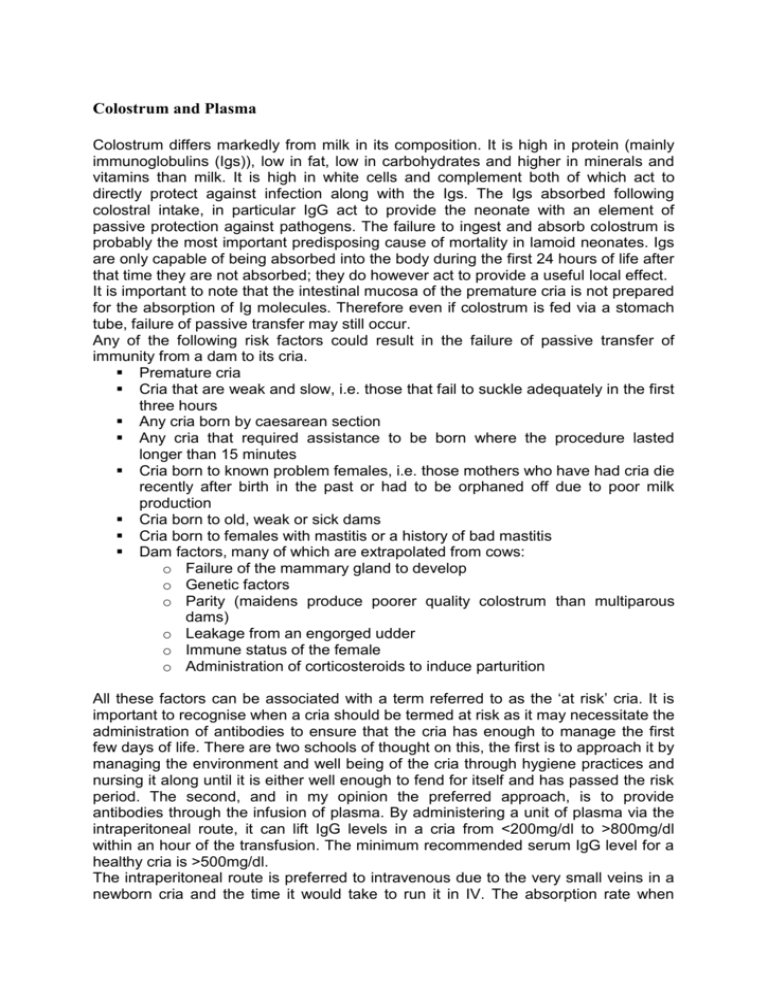
Colostrum and Plasma Colostrum differs markedly from milk in its composition. It is high in protein (mainly immunoglobulins (Igs)), low in fat, low in carbohydrates and higher in minerals and vitamins than milk. It is high in white cells and complement both of which act to directly protect against infection along with the Igs. The Igs absorbed following colostral intake, in particular IgG act to provide the neonate with an element of passive protection against pathogens. The failure to ingest and absorb colostrum is probably the most important predisposing cause of mortality in lamoid neonates. Igs are only capable of being absorbed into the body during the first 24 hours of life after that time they are not absorbed; they do however act to provide a useful local effect. It is important to note that the intestinal mucosa of the premature cria is not prepared for the absorption of Ig molecules. Therefore even if colostrum is fed via a stomach tube, failure of passive transfer may still occur. Any of the following risk factors could result in the failure of passive transfer of immunity from a dam to its cria. Premature cria Cria that are weak and slow, i.e. those that fail to suckle adequately in the first three hours Any cria born by caesarean section Any cria that required assistance to be born where the procedure lasted longer than 15 minutes Cria born to known problem females, i.e. those mothers who have had cria die recently after birth in the past or had to be orphaned off due to poor milk production Cria born to old, weak or sick dams Cria born to females with mastitis or a history of bad mastitis Dam factors, many of which are extrapolated from cows: o Failure of the mammary gland to develop o Genetic factors o Parity (maidens produce poorer quality colostrum than multiparous dams) o Leakage from an engorged udder o Immune status of the female o Administration of corticosteroids to induce parturition All these factors can be associated with a term referred to as the ‘at risk’ cria. It is important to recognise when a cria should be termed at risk as it may necessitate the administration of antibodies to ensure that the cria has enough to manage the first few days of life. There are two schools of thought on this, the first is to approach it by managing the environment and well being of the cria through hygiene practices and nursing it along until it is either well enough to fend for itself and has passed the risk period. The second, and in my opinion the preferred approach, is to provide antibodies through the infusion of plasma. By administering a unit of plasma via the intraperitoneal route, it can lift IgG levels in a cria from <200mg/dl to >800mg/dl within an hour of the transfusion. The minimum recommended serum IgG level for a healthy cria is >500mg/dl. The intraperitoneal route is preferred to intravenous due to the very small veins in a newborn cria and the time it would take to run it in IV. The absorption rate when going IP is almost the same as going IV; and is by far and a way better than going orally. Recent work undertaken by Walter Bravo has suggested that the IgG molecules in camelids differ from those found in other species therefore it is important that they receive colostrum from their Dam where possible. Alternate sources of colostrum may well be less than adequate; although anecdotally there are a number of products available that appear to work well. Plasma is not hard to obtain although if your vet is not familiar with Camelids then it may be a daunting task. Finding the correct equipment to collect the blood from can be the hardest part and then spinning it down to extract the plasma requires the use of a centrifuge which not all practices will have access to. The bags required for blood collection can be sourced from a company called Fenwal which can be found on the internet (they have bought out the previous supplier of the equipment called Baxters). How much plasma is enough? It would appear that if approached early on when an ‘at risk’ cria is identified then smaller volumes are sufficient (100ml). Recent work at The Ohio State University however has shown that one unit of plasma (approx. 200300ml) failed to elevate blood IgG levels over the minimum required amount (>800mg/dL). In these cases the cria presented were already quite flat and required a second infusion of plasma to increase the IgG levels sufficiently. On a final note, even a healthy cria can have low IgG levels so be aware that in early stages of life, plasma can be very beneficial to an ill animal even if you think it may have had sufficient colostrum. Dams do not always produce good quality colostrum so if the cria is seen to suck and appears to be doing well it may still have suboptimal IgG levels. Dam factors are very important in producing good colostrum, and a key factor would be good nutrition! Presentation given by Peter Aitken BVSc, MRCVS of Northpoint Veterinary Services, Essex.
